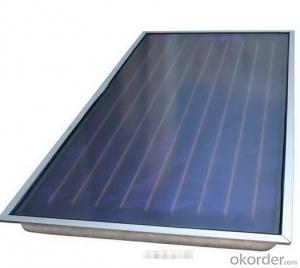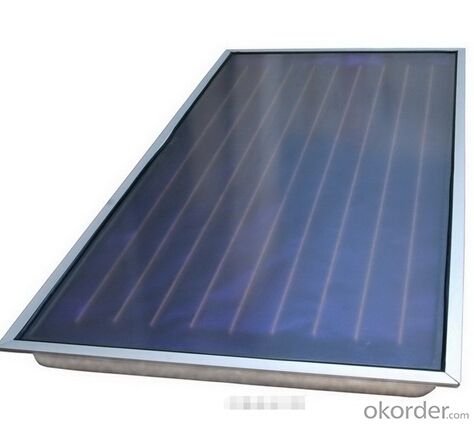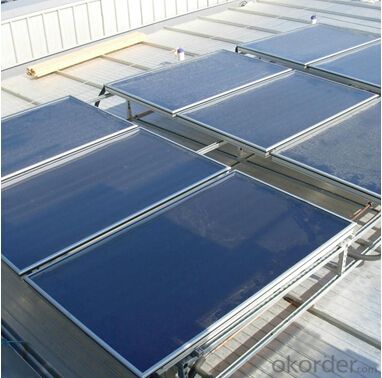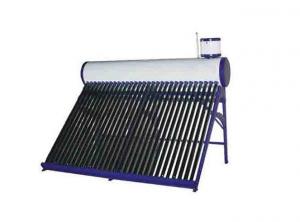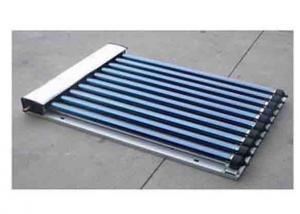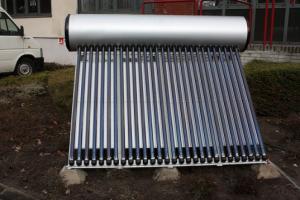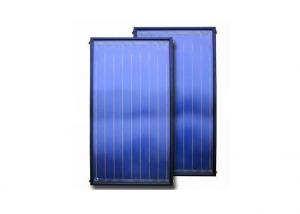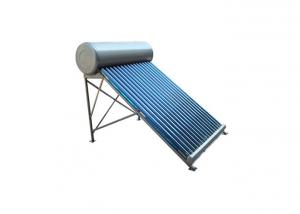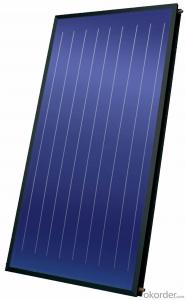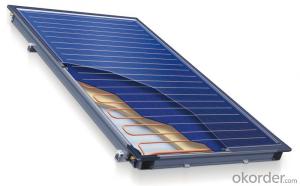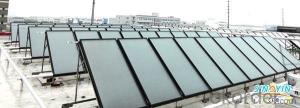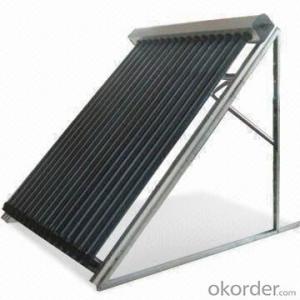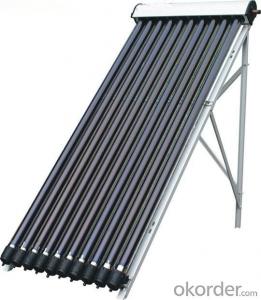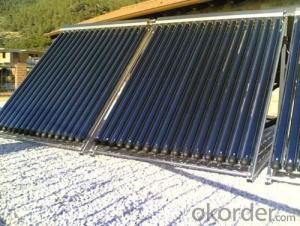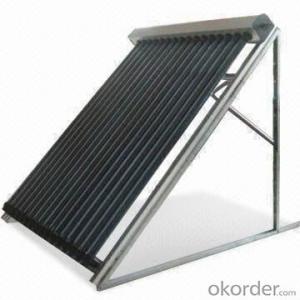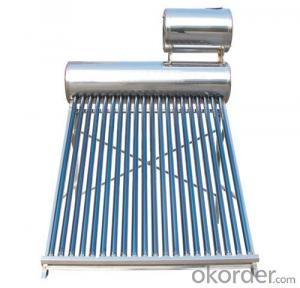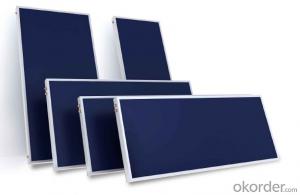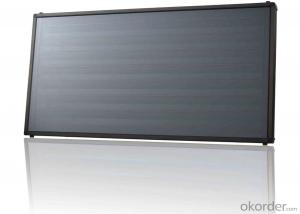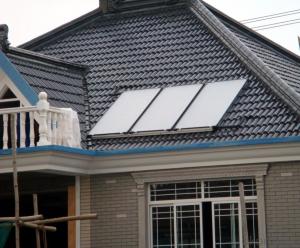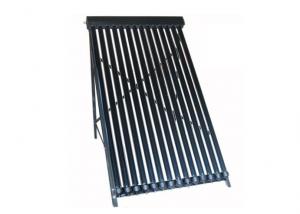High Efficiency Heat Pipe Solar Collectors With Flexible Tubing
- Loading Port:
- China main port
- Payment Terms:
- TT OR LC
- Min Order Qty:
- 10 unit
- Supply Capability:
- 50000 unit/month
OKorder Service Pledge
OKorder Financial Service
You Might Also Like
High Efficiency and Heat Pipe Solar Collector
High Efficiency and Heat Pipe Solar Collector Features
1) Aluminum silicate which resist high temperature up to 1000 degree C.
2) New patent for clip system which easy to insert and secure without soap foam.
3) Looks more stylish, stronger and nicer.
4) Installation is much faster, free maintenance.
5) Suitable for mains pressure water (up to 16 bar);
6) The silver coated of the glass is visible, so easy to inspect if the tube has lost vacuum.
High Efficiency and Heat Pipe Solar Collector Work Principle
1) The operation of the solar collector is very simple.
2) Solar absorption: solar radiation is absorbed by the solar tubes and
converted into heat.
3) Solar heat transfer: heat pipes conduct the heat from within the solar tube
up to the header pipe
4) Solar energy storage: water is circulated through the header, via
intermittent pump cycling.Each time the water circulates through the header, the
temperatures is raised by 5-10C. Throughout the day, the water in the tank is
gradually heated.
High Efficiency and Heat Pipe Solar Collector Technical Specifications
Model | JJR-HP-15 | JJR-HP -18 | JJR-HP -20 | JJR-HP -24 | JJR-HP -25 | JJR-HP -30 |
Length of Tube | 1800mm | 1800mm | 1800mm | 1800mm | 1800mm | 1800mm |
Outer Diameter of Tube | φ58mm | φ58mm | φ58mm | φ58mm | φ58mm | φ58mm |
Qty of Tube | 15 | 18 | 20 | 24 | 25 | 30 |
Collecting Area | 1.9m2 | 2.30m2 | 2.55m2 | 3.04m2 | 3.2m2 | 3.84m2 |
Loading Qty (set) 20'FT | 112 | 94 | 90 | 74 | 74 | 65 |
40' FT | 224 | 188 | 180 | 148 | 148 | 130 |
40' HQ | 270 | 226 | 220 | 182 | 182 | 158 |
Product Show
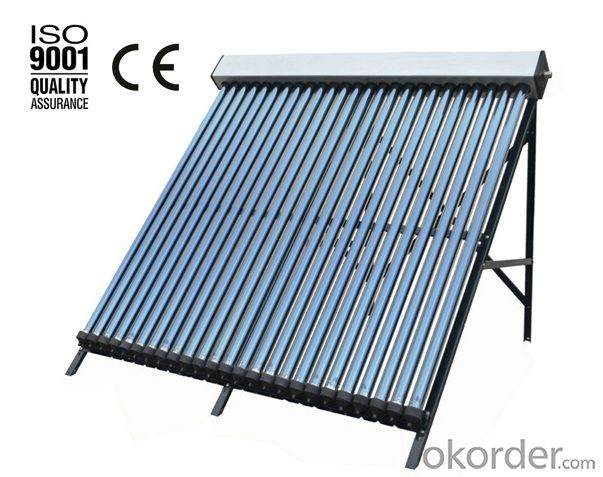
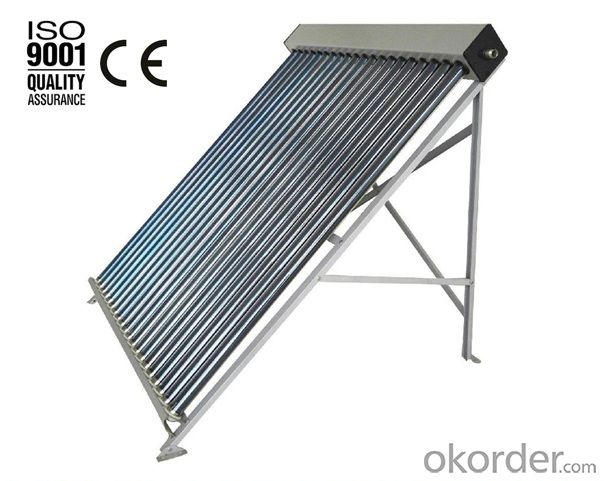
- Q: Can solar collectors be used in construction sites?
- Yes, solar collectors can be used in construction sites. They are a sustainable and efficient source of energy that can be utilized to power various equipment and machinery on site, reducing the reliance on traditional fossil fuel-based power sources. Additionally, solar collectors can also be used to provide hot water or heating for construction site facilities, making them a versatile and eco-friendly option for construction sites.
- Q: Can solar collectors be used for pool heating?
- Yes, solar collectors can be used for pool heating.
- Q: Can solar collectors be used in areas with limited access to storage solutions?
- Yes, solar collectors can be used in areas with limited access to storage solutions. Solar collectors primarily generate electricity when the sun is shining, which can be directly used for immediate energy needs in such areas. While storage solutions like batteries are typically used to store excess energy for later use, the absence of storage options does not prevent the direct use of solar energy as long as there is sunlight available.
- Q: What happens if a solar collector gets damaged?
- If a solar collector gets damaged, it may result in reduced efficiency or complete failure to generate solar energy. The extent of the damage will determine the impact on the collector's performance. Damages such as cracks or breaks in the glass cover or pipes can lead to leaks, reducing the system's ability to capture and transfer heat. In severe cases, major damage may require replacing the collector altogether. Prompt repairs or replacements are essential to ensure optimal functioning of the solar collector and maximize energy production.
- Q: Can solar collectors be used for heating industrial wastewater?
- Yes, solar collectors can be used for heating industrial wastewater. Solar thermal systems, such as solar water heaters or solar thermal panels, can be employed to heat water or wastewater using the energy from the sun. By utilizing solar collectors, industrial facilities can reduce their reliance on fossil fuels and lower their energy costs while also effectively heating their wastewater for various industrial processes.
- Q: Can solar collectors be used in areas with limited access to insurance coverage?
- Yes, solar collectors can be used in areas with limited access to insurance coverage. While insurance coverage is always recommended to protect against potential risks and damages, it is not a requirement for installing and using solar collectors. These systems can still provide renewable energy benefits in areas where insurance coverage may be limited or unavailable.
- Q: Can solar collectors be used in art installations?
- Yes, solar collectors can definitely be used in art installations. They can be incorporated into various creative designs to harness solar energy and power different elements of the installation. This not only adds an eco-friendly aspect to the artwork but also showcases the potential of renewable energy in a visually captivating way.
- Q: Can solar collectors be used in solar thermal space heating?
- Yes, solar collectors can be used in solar thermal space heating. Solar thermal space heating systems utilize solar collectors to absorb the sun's energy and convert it into heat. These collectors, often made of materials like glass or metal, capture the sun's rays and transfer the heat to a fluid, such as water or antifreeze. This heated fluid is then circulated through a system of pipes or tubes, transferring the heat to the space that needs to be heated. Solar collectors for space heating can come in different forms, including flat-plate collectors, evacuated tube collectors, or even air collectors. The choice of collector type depends on factors such as efficiency, cost, and specific heating requirements. Solar thermal space heating systems provide a sustainable and renewable alternative to conventional heating methods, as they use the sun's energy, which is abundant and free. They can be particularly effective in regions with ample sunlight, and when properly designed and installed, they can significantly reduce or even eliminate the need for traditional heating fuels like gas or oil. Additionally, solar thermal space heating systems can have a positive impact on reducing greenhouse gas emissions and dependence on fossil fuels. However, it is important to note that solar thermal space heating systems may not be suitable for all situations. Factors such as climate, building orientation, available space, and heating demand should be considered before deciding to install such a system. Additionally, proper maintenance and system design are crucial to ensure optimal performance and longevity. In conclusion, solar collectors can indeed be used in solar thermal space heating systems, providing a sustainable and cost-effective way to heat spaces using the sun's energy.
- Q: Can solar collectors be used in hurricane-prone areas?
- Yes, solar collectors can be used in hurricane-prone areas with proper design and installation considerations. The collectors should be securely mounted to withstand strong winds and potential debris impact. Additionally, regular maintenance and inspection will help ensure their functionality and durability in such challenging weather conditions.
- Q: Can solar collectors be used for heating radiant wall systems?
- Yes, solar collectors can be used for heating radiant wall systems. Solar collectors capture energy from the sun and convert it into heat, which can then be used to heat water that circulates through the radiant wall system, providing efficient and sustainable heating.
Send your message to us
High Efficiency Heat Pipe Solar Collectors With Flexible Tubing
- Loading Port:
- China main port
- Payment Terms:
- TT OR LC
- Min Order Qty:
- 10 unit
- Supply Capability:
- 50000 unit/month
OKorder Service Pledge
OKorder Financial Service
Similar products
Hot products
Hot Searches
Related keywords
